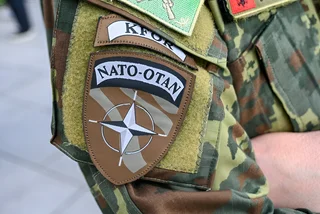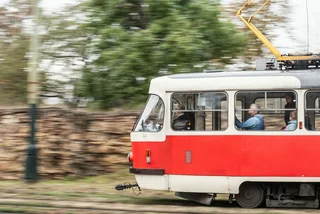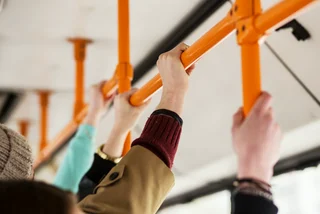The Czech Republic’s busiest bridge will be undergoing extensive repairs, starting in May. The Barrandov Bridge, a part of the city’s ring road, is crossed by about 140,000 cars daily, and it has not had a full renovation since it went into service.
Work on Barrandov Bridge (Barrandovský most) will be carried out in four phases and will last until 2025. Work will last between 80 and 110 days each year. Throughout the repairs, three lanes will be open to drivers in each direction, according to the Technical Roadway Administration (TSK), which is overseeing the repairs.
The TSK selected a contractor for work based on prices, length of traffic restrictions, and experience with similar projects. The company PORR, which bid CZK 594.5 million for the contract, has been selected to do the work. Since Barrandov Bridge is an essential traffic artery, the length of time of the repairs had the same weight as the price in evaluating the bids from contractors.

Prague Deputy Mayor Adam Adam Scheinherr, responsible for transit, said that due to careful planning traffic restrictions this year have been reduced to three and a half months from the original nine. “In addition, we will direct them to the summer holidays, when there is the least traffic in Prague,” he said.
Work will start this year with the demolition and reconstruction of a new ramp from Strakonická Street. Detours are now being planned.
TSK General Director Jozef Sinčák said the administration has been preparing for the renovation of the bridge’s superstructure for three years. “We diagnosed the bridge, prepared a renovation project, rehabilitated the substructure, repaired the access and descent ramps, and renovated the surrounding main routes. The infrastructure is thus ready for this huge event,” he said.
Prague Mayor Zdeněk Hřib was critical of previous city administrations that let the bridge get into such poor condition. “The busiest bridge in our country … opened in 1988 (the southern half was already in 1983, it is actually two bridges next to each other) and nothing since. Our predecessors did not have the courage to [make repairs],” he said on Facebook. “But now we will repair the bridge so that it can continue to serve safely.”
Deputy Mayor Scheinherr went into more detail about the condition of the bridge.
“I wonder why the previous management let it go so far? Insulation on each bridge must be replaced after a maximum of 20 years. This has not been done for almost 40 years, and water has been flowing into the bridge for years,” Scheinherr said.
“This will make the renovation much more difficult. It's the same as taking care of your house or cottage. It is necessary to repair the roof or gutter from time to time so that water does not flow into it. It's no different with bridges,” he added.
Water has caused many of the pre-stressed support cables to rust away. The cables are sometimes completely broken so do not fulfill their function at all, or only handle a fraction of the load they are supposed to. “The most difficult operation will be to strengthen and supplement the cables so that the Barrandov Bridge can withstand the extreme stress it undergoes on a daily basis for decades to come,” he said.
The city wants to avoid a situation like the collapse of the Ponte Morandi bridge in Genoa in 2018 or the collapse of the Troja footbridge in Prague in December 2017. The collapse of the Troja bridge, which has now been replaced, put the spotlight on the poor state of many bridges in Prague.
Aside from the Barradov Bridge, others in poor shape include Libeň Bridge (Libeňský most), Hlávka's Bridge (Hlávkův most), and Palacký Bridge (Palackého most).
Scheinherr said it was essential that work on the Barrandov Bridge be started as soon as possible. “We've done thorough diagnostics and we know what we're up to. If we postponed [the repairs], the load capacity would have to be reduced or one lane would have to be closed in the coming years. Not to mention the risk of an accident. I don't want to allow that,” he said.
TSK engineers used various types of computer modeling to find the best solutions. “They did an amazing job and I am proud of all my colleagues. In any case, we cannot lie that the repair will not bring traffic complications. Given the condition of the bridge, we must all be lenient,” Scheinherr said.
“It will be challenging but manageable. We pressed the construction time to the most necessary technological minimum. The contractor will follow the exact computer models,” he added. Details of detour routes and the bridge capacity during the renovations will be disclosed soon, he added.

The Barrandov Bridge was designed in the Brutalist style by Karel Filsak, and it includes abstract sculptures by Josef Klimeš. One of the sculptures is popularly known as a hippo bath or elephant feeder, and is popular with urban climbers.
Work to construct the bridge started in 1978. the cost of construction was 483 million Czechoslovak crowns. It was originally called Antonín Zápotocký Bridge (most Antonína Zápotockého), after the communist president of Czechoslovakia who served in the 1950s. The name was changed in 1990. The bridge has eight lanes, is 352 meters long, and 40 to 55 meters wide.












 Reading time: 5 minutes
Reading time: 5 minutes 
































